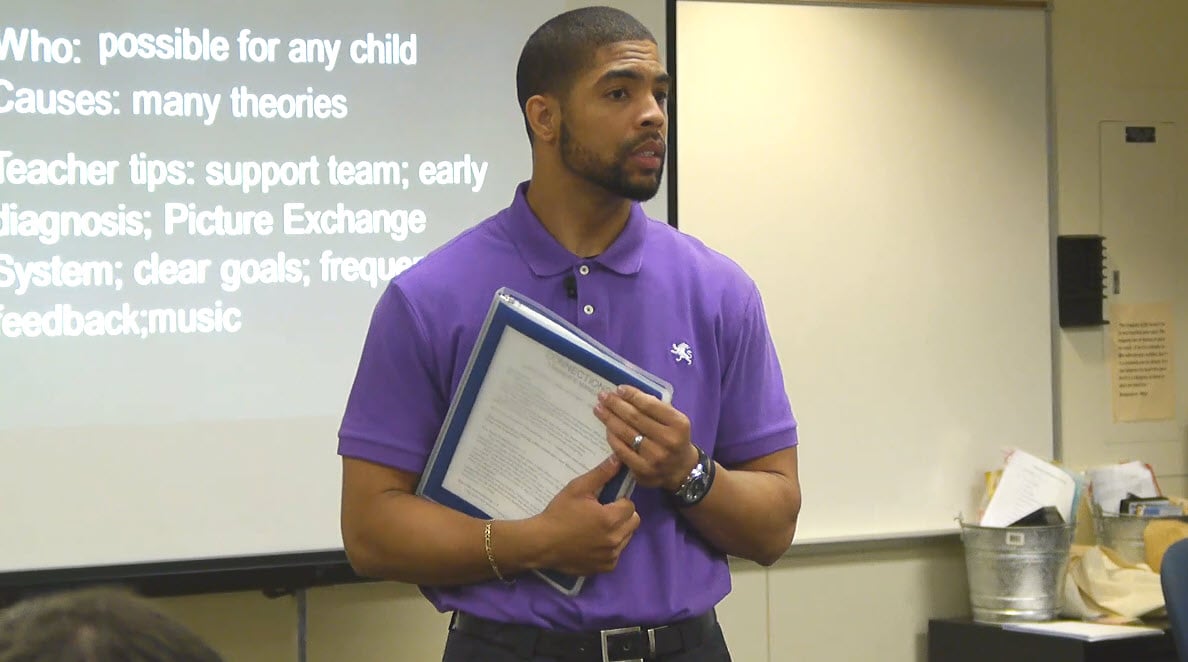



If you love the STEM fields and want to make a difference in the lives of youth, there’s a job for you.
STEM teachers are among the most in-demand positions in education today. Considering that enrollment in Texas public schools has increased nearly 9% over the last decade, there is a significant need for educators who want to teach science, technology, engineering and mathematics.
While elementary teachers typically cover all subject areas, from reading to writing, math and science, there are many ways to incorporate STEM lessons into all areas of your curriculum.
To become a STEM teacher there are 7 steps you need to go through in order to become certified. They are:
Enroll in an educator preparation program
Establish an account with the TEA
Complete background checks and begin your training
Take certification exams
Apply for an intern certificate and complete an internship
Finish training and take the PPR
Apply for your standard certification
Our article, 7 STEM Teaching Tools & Websites For New Educators, is a great resource for new teachers who are considering teaching STEM..
Some school districts also divide up their buildings differently than others, with 4th, 5th and 6th grades considered as intermediate levels. In these cases, you could exclusively teach STEM subjects to younger students who in another district woud be considered elementary-level.
So your first step in becoming an elementary STEM teacher is to choose the right certification program.
If you have a bachelor’s degree, an Educator Preperation Program, also known as an alternative teacher certification program, is a one of the best options to become certified as a STEM teacher. In fact, nearly half of all teachers to the Texas education system choose this path because it offers several benefits including:
Flexible scheduling
Course availability
Extensive networking opportunities
Collaboration opportunities
Hands-on experience
To qualify for this type of educator preparation program (EPP), the Texas Education Agency requires that you meet certain eligibility requirements. If you have a bachelor’s degree from an accredited institution of higher education, you must:
Have a minimum 2.5 GPA on an official transcript or in the last 60 semester hours of courses attempted
Be at least in the final semester of your bachelor’s degree program in which you need to provide a copy of your final semester schedule of classes, a letter from an academic advisor indicating you are eligible for graduation and an official transcript through the previous semester
You can also qualify for an EPP with an associate’s degree or no degree at all. However, with an associate’s degree, you must have at least two years of full-time wage-earning experience within the past 10 years in the field you plan to teach. The number rises to five years for no degree.
You must also have a current license in order to teach Health Science Technology, Criminal Justice or Cosmetology.
Important note: In order to enroll in an EPP/alternative certification program, you must also have completed 12 semester credit hours in the certification subject you wish to teach. If you do not meet this requirement or the GPA requirement, you must take a TxPACT exam as part of program admission requirements.
Need help choosing the right program? Our article, How To Spot The Best Online Teacher Certifcation Programs, offers insight into what to look for in programs.
| ECAP | ITEACH | TEXAS TEACHERS OF TOMORROW | |
| Application Fee: | $0 | $0 | $0 |
| Training Fee: | $400 | $0 | $4,350 |
| Internship / Teaching Fee: | $3,900 | $4,250 | $0 |
| Enrollment Fee: | $0 | $250 | $295 |
| Total: | $4,300 | $4,500 | $4,645 |
Additional fees:
|
Certification Exam (additional fees may apply) |
$116 |
|
Background Check & Fingerprinting |
$52.20 |
|
Intern Certificate |
$78 |
|
PPR Test |
$116 |
|
Standard Certificate |
$78 |
|
Certify Teacher Exam Review Program |
$35 (for ECAP interns only) |
Before you begin your teaching training journey to become an elementary STEM teacher, you need to take some very important steps first.
important steps first.
The first is to establish an account with the Texas Education Agency, which oversees primary and secondary public education. You must set up a TEA Login (TEAL) account to do this. This will give you access to your profile located in the Educator Certification Online System (ECOS). Use the first and last name that matches your Texas driver’s license or state identification.
The TEAL online portal will also be helpful down the road when you need to access any certification information. You can read more about how to access this part of the site in our article, Texas Teacher Certification Lookup Directions.
You will also need to complete all required background checks. As part of a national criminal background check, you must complete a fingerprinting process. Applicants must submit fingerprints electronically by using an approved vendor.
To become certified to teach in Texas, you must apply and be accepted into an alternative certification program and complete the required training that will consist of courses either online or in-person, or a combination of both. You will also complete field experience. In all, your training will include:
A minimum of 300 hours of training to receive a standard teaching certificate
Of these 300 hours, 30 must be dedicated to observation of a certified teacher in a classroom environment
To become a teacher, you must also take at least one content exam in the area you wish to teach. At ECAP, we ask our interns to immediately take a practice content test to establish a baseline of where their knoweldge base is at. This way each intern will have a good understanding of their current knowledge level in each subject area and know which areas they need further training in.
Then we strongly encouraged each intern to take 40 hours of online training before they take the actual content exam. While the content test currently has a passing grade score of 240, we instruct our interns to aim for a score of 270. Once you score a 270, ECAP will give you permission to take your content exams.
If you want to teach STEM at the elementary level, you have a variety of content exams available to you. The TExES content exams are available in more than 60 specialties, divided by grade levels or special certification areas such as computer science, health, mathematics and physical science.
Our article, List of Texas Teacher Certification Tests: What You Must Take To Teach, offers a recent list of content exams available. You may take more than one, which could make you more marketable to employers and open the doors to more opportunities. Some of the content areas you may be interested in include:
Core Subjects (Grades EC-6)
Health (Grades EC-12)
Mathematics/Science (Grades 4-8)
Science (Grades 4-8)
Technology Applications (Grades EC-12)
It’s important to work with your educator preparation program to ensure you take the right content exams that match your goals as a teacher.
Once you pass your content exam, you will receive a statement of eligibility from your educator preparation program. You can then apply for an intern certificate using the TEAL account you created.
can then apply for an intern certificate using the TEAL account you created.
With an intern certificate, you can begin looking for a teaching intership, which provide invaluable experience in the classroom and offer the work experience needed to see your training in action.
The process behind applying for an internship should be the same as applying for a teaching job. You should develop a strong resume, be prepared for your interview and even prepare lessons in advance to show you are ready for the job.
You’re nearing the end of your journey. Once you finish your 300 hours of training to obtain your standard teaching certificate, you must now take the PPR.
The Texas Examinations of Educator Standards Pedagogy and Professional Responsibilities is an important test since it “is designed to assess whether a test taker has the requisite knowledge and skills that an entry-evel educator in this field in Texas public schools must possess,” according to the TEA.
The test will focus on whether you know how to perform important functions required of teachers, including:
Designing instruction that promotes student learning
Creating a positive, productive classroom environment
Implementing effective, responsible instruction and assessment
Fulfilling professional roles and responsibilities
You must pass the PPR to teach at the elementary level and to teach STEM, which is why preparation is key. The educator preparation program that you choose should prepare you for the PPR by offering test preparation as part of the curriculum and not as costly add-ons.
You can read more about what to expect from this test preparation training in our article, Teacher Training Programs To Prepare You For The PPR.
Once you pass the PPR, you can apply for your standard certification using the TEAL login account you created.
You will also use the TEAL site to renew your standard certificate, which must be done every five years. To renew your standard certificate, you must complete continuing professional development courses.
Now that you are certified as an elementary STEM teacher, you will likely begin looking for your next teaching opportunity. Our article, 4 Insider Tips To Landing The Best STEM Teacher Jobs, can help.
While this may seem like a long journey, you’ll likely be in the classroom much faster than you thought since the best teacher training programs embrace a full-circle approach. In other words, all three components required for certification (training, testing and teaching) are completed simultaneously.
Perhaps the most important thing to keep in mind on your journey is that your educator preparation program should be by your side along the way, ensuring that your questions are answered and you are completing your timeline as quickly and efficiently as possible.
Topics: Becoming A Teacher
Micah is the Director of Curriculum & Technology. He holds a Bachelor of Arts in British Literature, from the University of North Texas and a Master of Arts in Teaching, from Louisiana College. In his previous career, Micah served for 14 years as a banker and bank manager. For the majority of this period, Micah managed the Downtown Fort Worth location of Frost Bank. In 2005, Micah finally surrendered to his true calling to be an educator. After a brief, but fulfilling term teaching high school English at Flower Mound High School in Lewisville ISD, Micah went to work for the family business, training teachers.
7166 Baker Blvd., Suite B · Richland Hills, Texas 76118
Phone 817-284-7731 | Fax 817-284-3396
Login | Make Payment | ECAP Handbook | Privacy Policy | Pricing
Your Comments